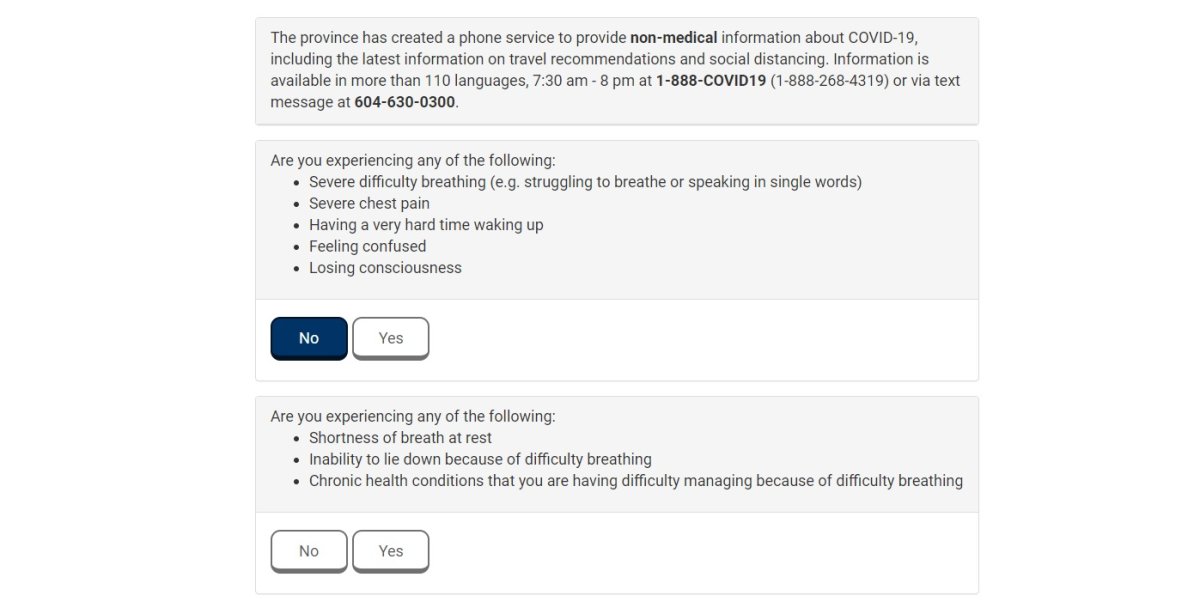As Canada buckles down under a string of restrictions to stop the spread of the new coronavirus, doctors are asking Canadians to consider self-assessing for the illness as a first step.

Health ministries in provinces hit hardest by COVID-19 — including British Columbia, Ontario and Quebec — are asking anyone who is concerned they have the virus to answer a series of questions at home before seeking further medical attention.
“These aren’t perfect tools, but they’re extremely helpful in getting people to understand what the risks are in the beginning and if they may or may not have the infection,” said Dr. Isaac Bogoch, an infectious disease specialist based out of Toronto General Hospital.
“It’s a good first approach. It’s not a one size fits all solution, but it’s an option for Canadians.”
Part of the emphasis being placed on the at-home assessment tools stems from keeping those with “really mild illnesses” out of overwhelmed emergency departments and clinics, according to Bogoch. It also plays a role in maintaining the social distancing practices being encouraged to stop the spread of infection.
“We want to avoid overcrowding in emergency departments and the possible transmission in emergency departments,” he said, adding that it’s also helpful to relieve some pressure on telephone lines.


Get weekly health news

“Of course, as always, emergency departments are open for people who are really, truly sick and are having trouble caring for themselves,” he said.
“While the messaging is correct — that people who have mild illnesses should avoid emergency departments — we still have to remember that some people will be really sick and will need to go to the emergency department, and there should be no barriers to that.”
If you are monitoring your own symptoms, Dr. Jeff Kwong, an epidemiologist and scientist with ICES and Public Health Ontario, suggested a couple other tips to help guide health care providers if your condition does, in fact, worsen.
One is taking your own temperature — and often.
“If you don’t already have a thermometer at home, get one. Check it periodically and keep a log of what you see,” he said.
“Keep a log of all the symptoms you’re experiencing. So when you get to the point you have to call in or see a doctor at an assessment center, you can tell them what symptom started on what date, and what symptom came next.”
He also recommended taking your own pulse and tracking it, noting that a high pulse often goes hand-in-hand with a fever.

“In 15 seconds, how many beats do you count? Multiply that number by four. Ideally, you’d be less than 80 beats per minute, and another above 100 is considered a little bit more abnormal,” he said.
“If someone has a fever and an elevated heart rate, that’s when we’d be more concerned. It gives a better reason to call or see a doctor.”
Kwong reiterated what many health experts have said — it’s easy to confuse the virus with other respiratory illnesses, so having these symptoms does not definitively mean you have COVID-19.
“There’s a lot of anxiety out there. It could be influenza, it could be strep throat,” he said.
“Just monitor and be mindful.”










Comments